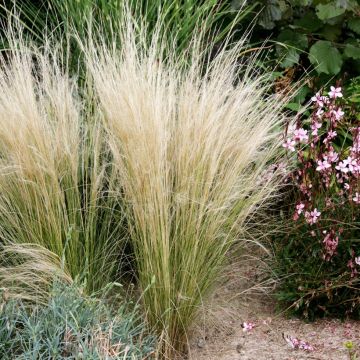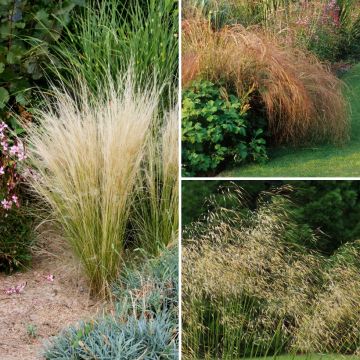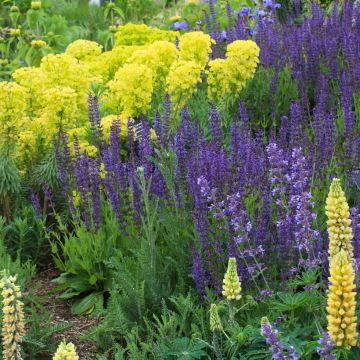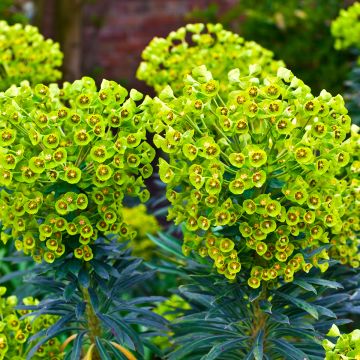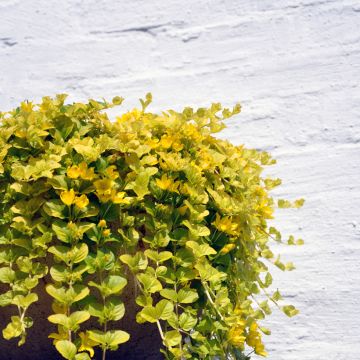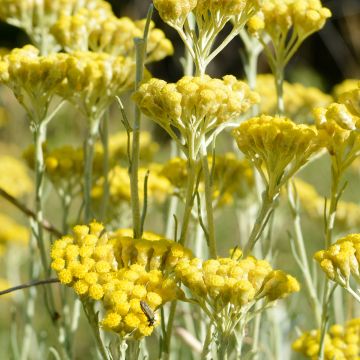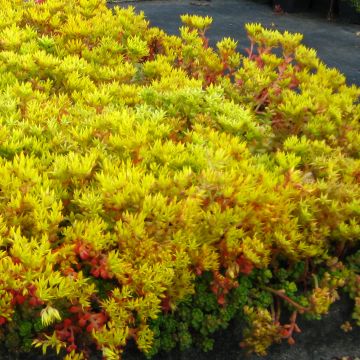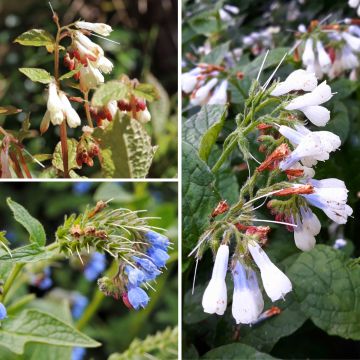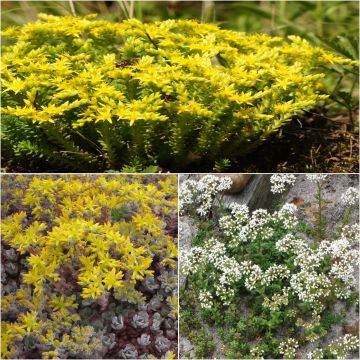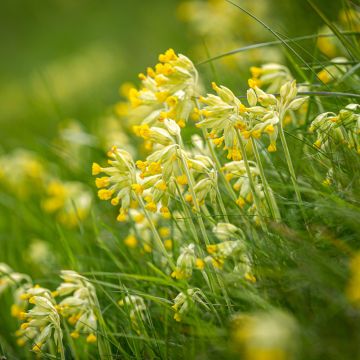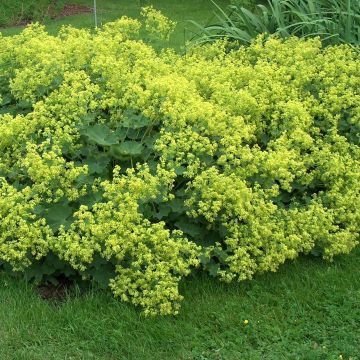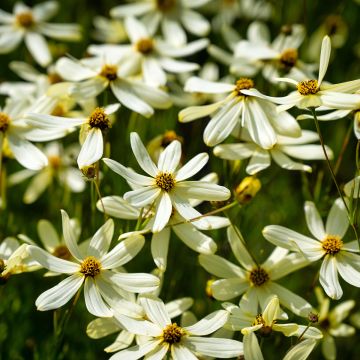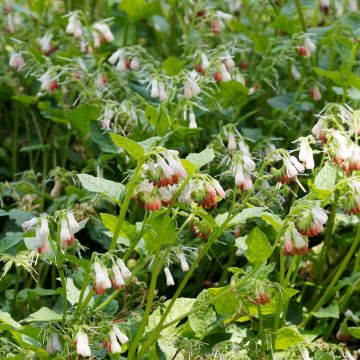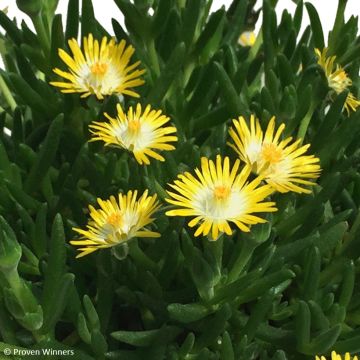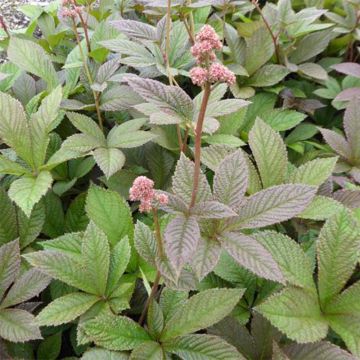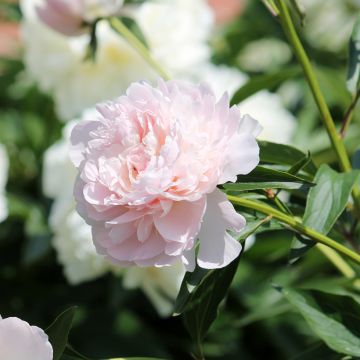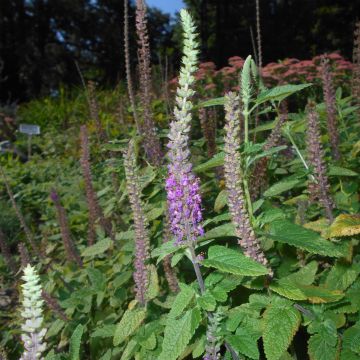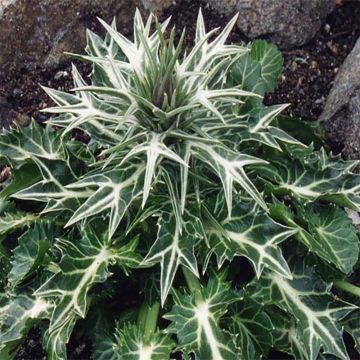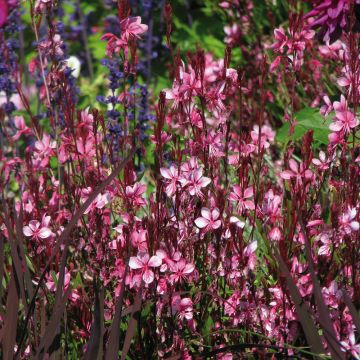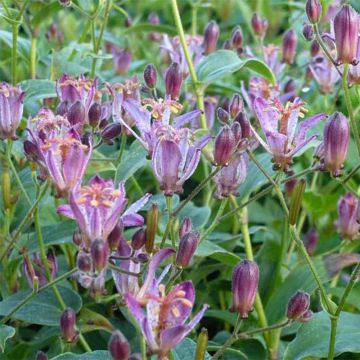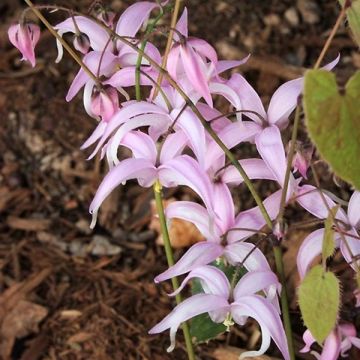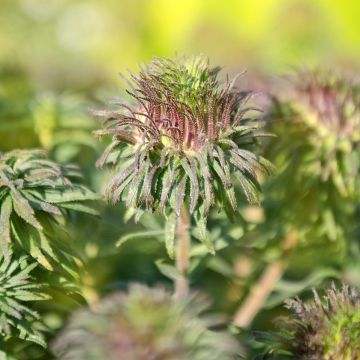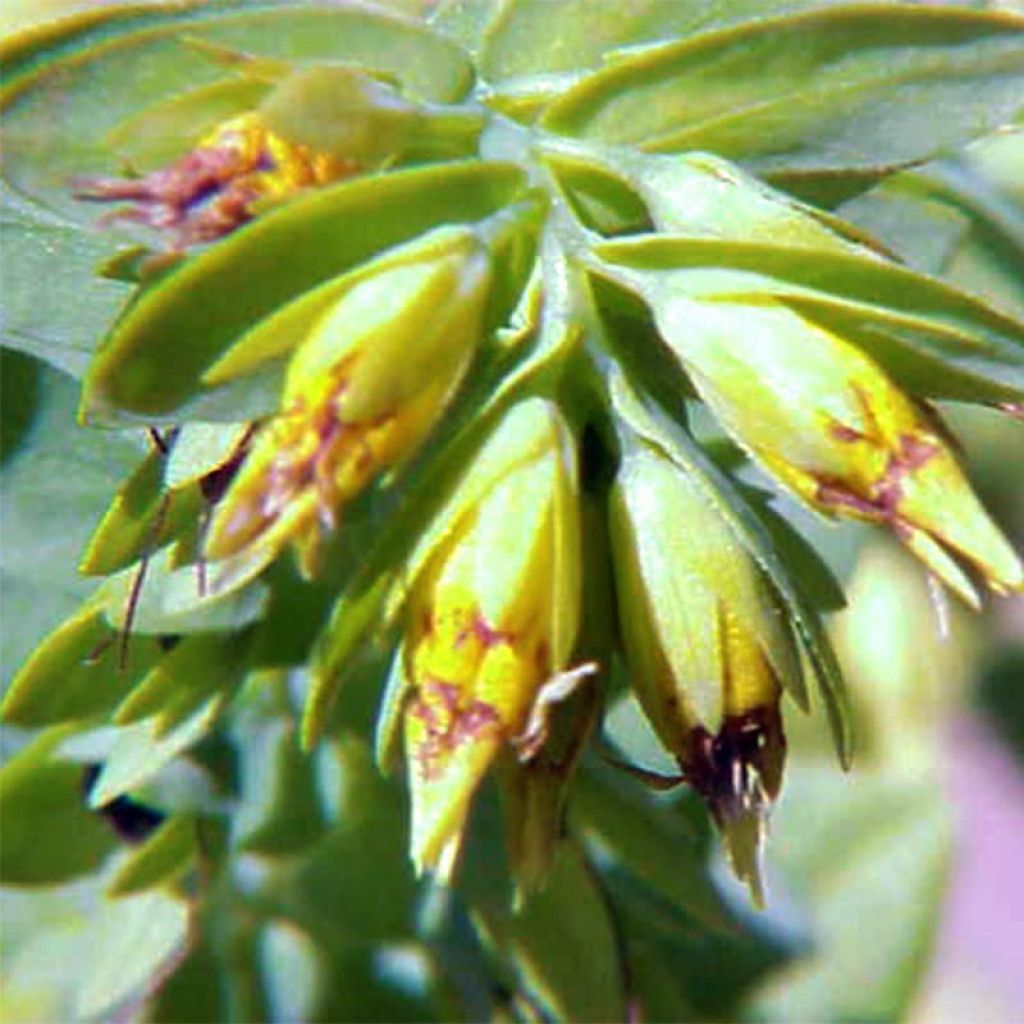

Cerinthe glabra
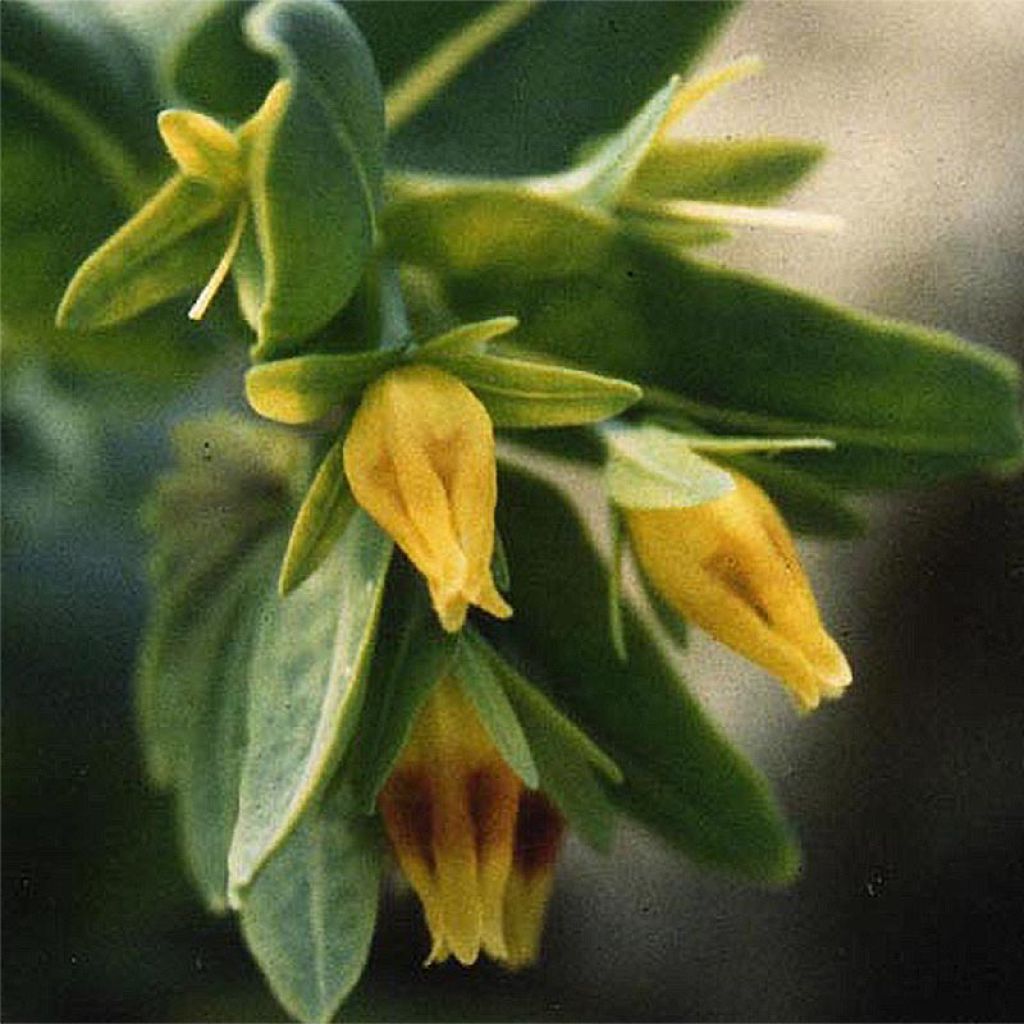

Cerinthe glabra
Cerinthe glabra
Cerinthe glabra
Honeywort
Why not try an alternative variety in stock?
View all →This plant carries a 12 months recovery warranty
More information
We guarantee the quality of our plants for a full growing cycle, and will replace at our expense any plant that fails to recover under normal climatic and planting conditions.
From €5.90 for pickup delivery and €6.90 for home delivery
Express home delivery from €8.90.
Does this plant fit my garden?
Set up your Plantfit profile →
Description
Cerinthe glabra is from montane flora, which is quite rare in cultivation. Despite not being spectacular, this perennial has an unusual appearance, firstly due to its yellow and purple flowering adorned with green bracts, and secondly because of its glaucous foliage spotted with lighter circles, reminiscent of lungworts. It doesn't live for many years, but it self-seeds generously. It can be acclimatised in a shady rockery, or on a well-drained and humus-rich slope which remains slightly moist in summer.
Cerinthe glabra, sometimes called glabrous honeywort, belongs to the family of Boraginaceae, like borage and forget-me-nots. It is a species native to central Europe, more precisely from a mountainous region located east of the Black Sea and in the southwest of the Caucasus. It is a very hardy plant with a short life span, which appreciates humus on moist limestone rocks. Its thick, blackish stump produces ascending or spreading stems, forming a beautiful bluish-green tuft of about 40-50 cm (16-20in) in all directions. The basal leaves are arranged in a rosette, with a glaucous lamina speckled with white. Those on the stems lack stalks and are clasping. Flowering takes place from May-June to August, depending on the climate. The flowers, quite small and urn-shaped, are light lemon yellow with a purple circle, surrounded by almond green bracts. These flowers, grouped in clusters, are nectar-rich. After pollination seeds are formed which easily germinate in cool and light soil. The foliage is annual, absent in winter. The root of this plant, a taproot, does not like to be disturbed.
This Cerinthe will delight enthusiasts of native plants and curiosities. Well adapted to mountain gardens, where it naturalises, it can also be adopted in meadows, in a slightly shaded rockery, or in a pot. Its cut flowers are charming in a bouquet - for this, immerse the stems in warm water. Small spring bulbs (hyacinths, grape hyacinths, spring crocuses, snowdrops, liverworts) can be planted alongside it, as well as hellebores and Carex.
Report an error about the product description
Cerinthe glabra in pictures
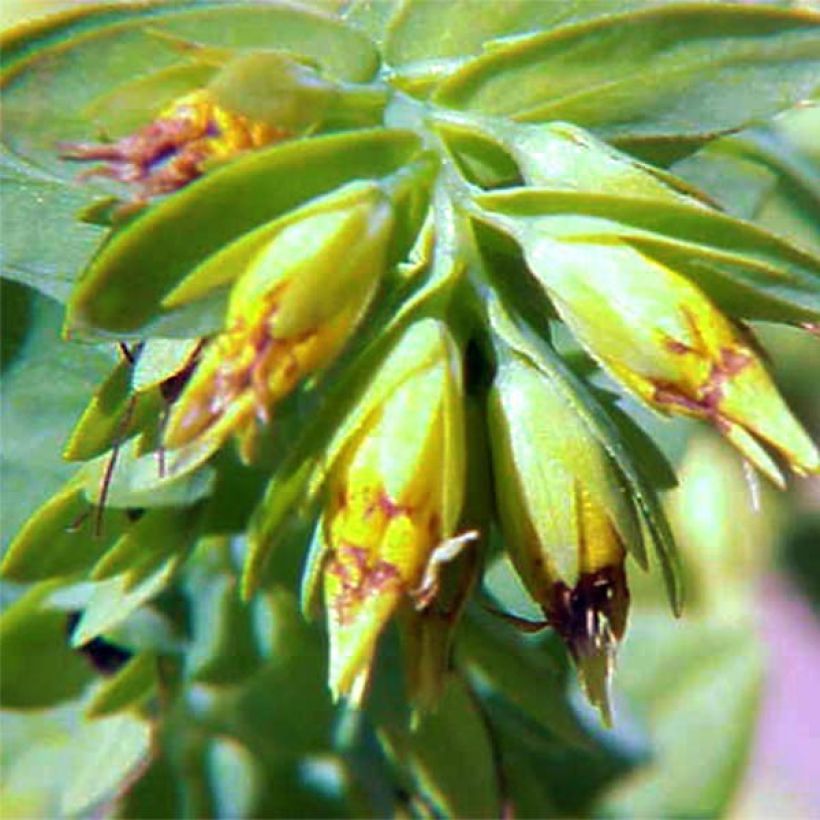

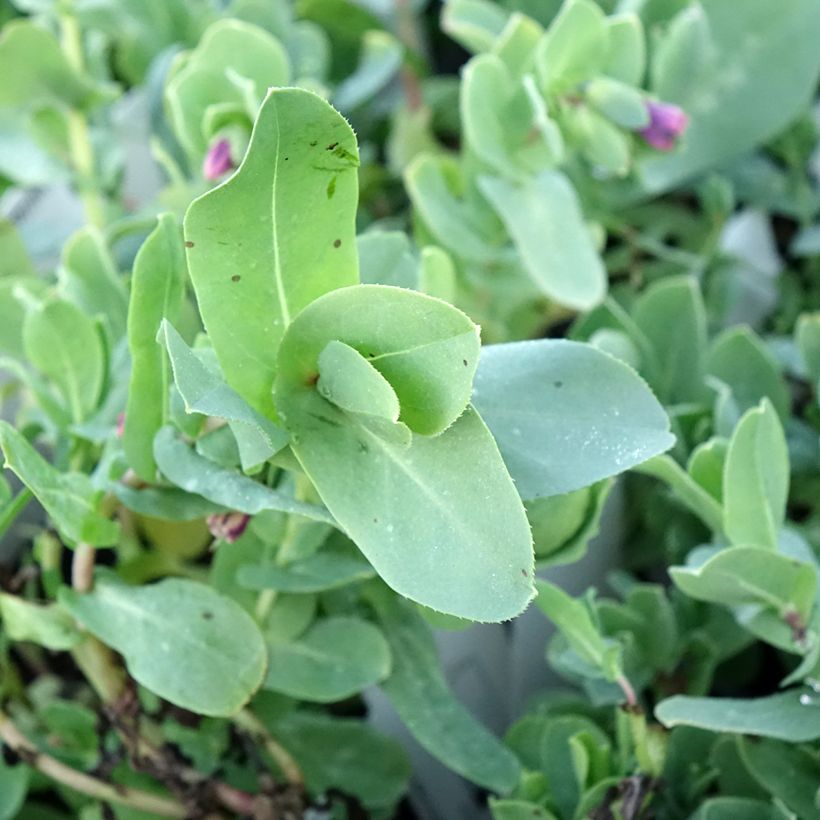

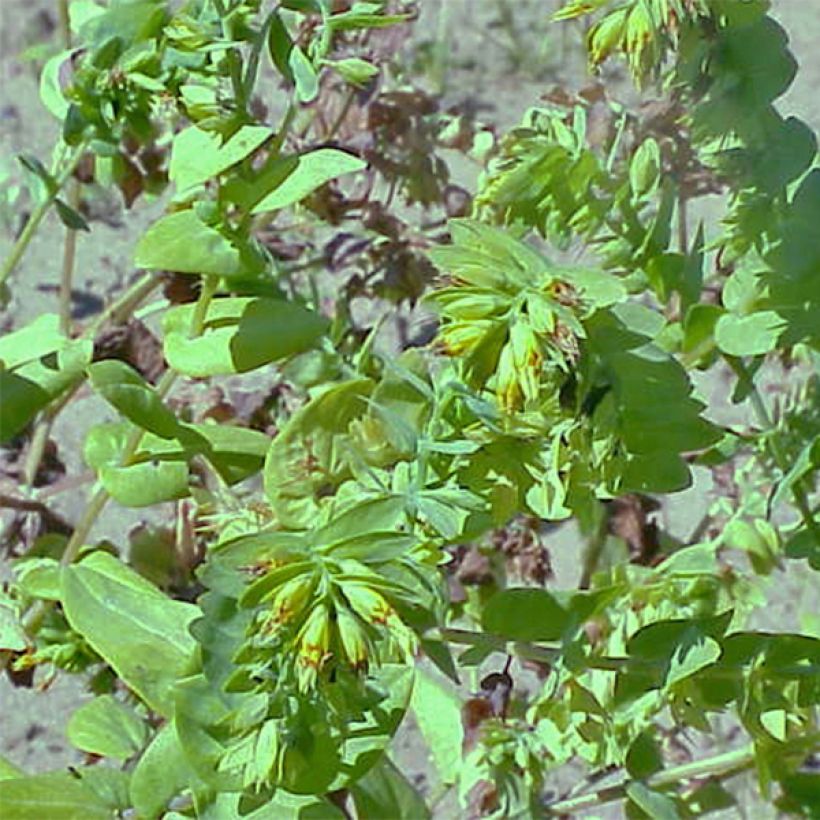

Flowering
Foliage
Plant habit
Botanical data
Cerinthe
glabra
Boraginaceae
Honeywort
Alps
Other Perennials A to Z
Planting and care
Cerinthe glabra is particularly adapted to the montane climate. This plant enjoys partial shade as well as rocky limestone areas containing pockets of humus that never completely dry out in summer. It is a very hardy plant that often behaves like a biennial. It will be planted in a rather shaded rocky area, or on a well-drained slope rich in humus. Under these conditions, it readily self-seeds.
Planting period
Intended location
Care
This item has not been reviewed yet - be the first to leave a review about it.
Haven't found what you were looking for?
Hardiness is the lowest winter temperature a plant can endure without suffering serious damage or even dying. However, hardiness is affected by location (a sheltered area, such as a patio), protection (winter cover) and soil type (hardiness is improved by well-drained soil).

Photo Sharing Terms & Conditions
In order to encourage gardeners to interact and share their experiences, Promesse de fleurs offers various media enabling content to be uploaded onto its Site - in particular via the ‘Photo sharing’ module.
The User agrees to refrain from:
- Posting any content that is illegal, prejudicial, insulting, racist, inciteful to hatred, revisionist, contrary to public decency, that infringes on privacy or on the privacy rights of third parties, in particular the publicity rights of persons and goods, intellectual property rights, or the right to privacy.
- Submitting content on behalf of a third party;
- Impersonate the identity of a third party and/or publish any personal information about a third party;
In general, the User undertakes to refrain from any unethical behaviour.
All Content (in particular text, comments, files, images, photos, videos, creative works, etc.), which may be subject to property or intellectual property rights, image or other private rights, shall remain the property of the User, subject to the limited rights granted by the terms of the licence granted by Promesse de fleurs as stated below. Users are at liberty to publish or not to publish such Content on the Site, notably via the ‘Photo Sharing’ facility, and accept that this Content shall be made public and freely accessible, notably on the Internet.
Users further acknowledge, undertake to have ,and guarantee that they hold all necessary rights and permissions to publish such material on the Site, in particular with regard to the legislation in force pertaining to any privacy, property, intellectual property, image, or contractual rights, or rights of any other nature. By publishing such Content on the Site, Users acknowledge accepting full liability as publishers of the Content within the meaning of the law, and grant Promesse de fleurs, free of charge, an inclusive, worldwide licence for the said Content for the entire duration of its publication, including all reproduction, representation, up/downloading, displaying, performing, transmission, and storage rights.
Users also grant permission for their name to be linked to the Content and accept that this link may not always be made available.
By engaging in posting material, Users consent to their Content becoming automatically accessible on the Internet, in particular on other sites and/or blogs and/or web pages of the Promesse de fleurs site, including in particular social pages and the Promesse de fleurs catalogue.
Users may secure the removal of entrusted content free of charge by issuing a simple request via our contact form.
The flowering period indicated on our website applies to countries and regions located in USDA zone 8 (France, the United Kingdom, Ireland, the Netherlands, etc.)
It will vary according to where you live:
- In zones 9 to 10 (Italy, Spain, Greece, etc.), flowering will occur about 2 to 4 weeks earlier.
- In zones 6 to 7 (Germany, Poland, Slovenia, and lower mountainous regions), flowering will be delayed by 2 to 3 weeks.
- In zone 5 (Central Europe, Scandinavia), blooming will be delayed by 3 to 5 weeks.
In temperate climates, pruning of spring-flowering shrubs (forsythia, spireas, etc.) should be done just after flowering.
Pruning of summer-flowering shrubs (Indian Lilac, Perovskia, etc.) can be done in winter or spring.
In cold regions as well as with frost-sensitive plants, avoid pruning too early when severe frosts may still occur.
The planting period indicated on our website applies to countries and regions located in USDA zone 8 (France, United Kingdom, Ireland, Netherlands).
It will vary according to where you live:
- In Mediterranean zones (Marseille, Madrid, Milan, etc.), autumn and winter are the best planting periods.
- In continental zones (Strasbourg, Munich, Vienna, etc.), delay planting by 2 to 3 weeks in spring and bring it forward by 2 to 4 weeks in autumn.
- In mountainous regions (the Alps, Pyrenees, Carpathians, etc.), it is best to plant in late spring (May-June) or late summer (August-September).
The harvesting period indicated on our website applies to countries and regions in USDA zone 8 (France, England, Ireland, the Netherlands).
In colder areas (Scandinavia, Poland, Austria...) fruit and vegetable harvests are likely to be delayed by 3-4 weeks.
In warmer areas (Italy, Spain, Greece, etc.), harvesting will probably take place earlier, depending on weather conditions.
The sowing periods indicated on our website apply to countries and regions within USDA Zone 8 (France, UK, Ireland, Netherlands).
In colder areas (Scandinavia, Poland, Austria...), delay any outdoor sowing by 3-4 weeks, or sow under glass.
In warmer climes (Italy, Spain, Greece, etc.), bring outdoor sowing forward by a few weeks.

































